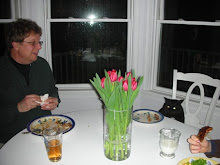
Brown Ale was adopted and raised in the English countryside in the late sixteen hundreds to the gentile, yet proud Mild Ale family. He was a fire-roasted malt, and therefore required special care by dedicated brewers of the day. And he was very special indeed! Smooth and silky with a hint of smoke, sometimes nutty, and tad chocolaty, he was less hoppy than his Pale cousins and leaner than the Porters he ran with on occasions. He started his own family in the early 1700s. Continuing in his tradition of being Mild, he clung to his deep-routed belief that his family be brewed with 100% fire-roasted brown malts. Years passed as Brown’s offspring grew up and sought a life of their own. One married into the Hoppy family. They in turn adopted cute little Pale Malts into the hoppy brood. One was welcomed into the family of Porters. Alas, one of Brown’s offspring landed on hard times and fell into the hands of poorer and sometimes unscrupulous brewers. No longer fire-roasted, cheap malts added and sometimes dyed to look brown, it was a sad affair. In a short period of time cheap hybrids and offshoots of the fabled Browns became quite acceptable to the thirsty masses. Folks on a budget could have cared less. Any beer would do. The pure bred Browns were relegated to just a few loyalists of the day. But, as the old saying goes, what goes around comes around again. This is most true if you happen to be a worthy beer style.
The Brown Ale style (and that is varied) seems to be making a steady comeback in the hearts and minds of easy-drinking beer-lovers everywhere. Hail Brown!
Browns from the land of Origin
Newcastle Brown Ale from Scottish and Newcastle Brewery in Edinburgh, Scotland may be the Brown Ale that comes immediately to mind. At 4.7% ABV, it leans towards its Mild Ale roots.
Samuel Smith’s Old Brewery Nut Brown Ale – Tadcaster, England – 5% ABV
It pours a shiny nutmeg brown color with a fast-fading off-white head along with some webby lacing.
I love the nutty, earthy aroma at first pour. Sweet malty and tea-like smells mingle with a light whiff of fruit cup and bread dough. A very distant smell of cut green wood is noticed.
The flavors are incredibly uniform and tasty without any off tastes or weighted flavor profiles. Nicely balanced!
The nutty malty sweetness is tempered with tea-like, light citrus and a faint pear-like fruitiness. Mild alcohol fuminess peeks through in perfect harmony.
The mouthfeel is slick, not oily. A little buttery, not thick.
Delectable liquid brew!
Belgian Brown
Corsendonk Pater Abbey Brown from Oud-Turnhout, Belgium is a stronger Belgian-style variation of the Brown Ale. Bigger, bolder and sweeter than the English versions, this Brown supplies a fairly strong alcoholic punch. 7.5% ABV
Brown’s New England Ancestors
Smuttynose Old Brown Dog Brown Ale – Portsmouth, NH – 6.7% ABV
Is a nice Americanized Brown Ale with a bit more of an alcohol profile that your English version, yet true to form, has distinctive Brown roots. Quite good!
Shipyard Brewers Brown Ale – Portland, Maine – 5.4% ABV
The brown shoe polish color is true to the style. A foamy beige head rises fast and holds over the top. Fairly good retaining lace throughout.
Sweet malt and fruit bread smells, blend with a bit of citrusy and tea-like aromas. A faint whiff of peaty whiskey is perceived.
The earthy, peaty malt taste is upfront. A doughy wheat bread taste is followed with tea-like and fruit cup flavors. A little limey citrus and distant whiskey taste are ever present.
It's a fairly deceptively dry body, with just enough smoothness to make it gulpable.
Tell anyone in the UK that they are drinking an original brown ale and they won't bat an eye lash. Except for the slightly elevated alcoholic kick, there is no discernible difference.
Easy to Find in New England
Dogfish Head Indian Brown Ale – Milton, Delaware – 7.2% ABV
Now this is what a strong Brown Ale should taste like! I've always been partial to Brown Ales, but lately it seems, they're getting harder to find. Now this one comes along and raises the bar - so to speak - as to what the style can and should be (even if this particular one is substantially more potent - nearly a hoppy Baltic Porter, but a bit more sweet and subdued.
It pours a dark cordovan brown with a nice firm tan head on top. Lots of sticky lace clings to the side of the glass. The aroma is strongly of rich chocolate malt, coffee, floral hops and mildly of alcohol. The ample sweet malt body is rich in dark chocolate; crème brulee burnt top, fresh bread and faint touch of licorice. Grapefruit, mild lime and hint of metallic tang provide a nice bitter counter-balance to the malt. A pleasant warming alcohol seems to bring all together.
Browns are extremely versatile when pairing with all kinds of foods. For mild browns, consider creamy cheeses, or Swedish Meatballs, or sweet ribs. A nice Nut Brown will quell the heat of Spicy Chili. Stronger Browns go well with Hot Turkey and Gravy sandwiches and can be used in preparing Beef Stews. Try the Corsendonk Brown to make Beef Carbonade, the traditional dish of Belgium. Good stuff, Brown Ale!
So the Brown Ale is back and in many traditional and exciting new ways! The next time you pour yourself a Brown ale, give the glass a knowing nod and a friendly wink. Don’t worry, everyone in the room will understand.
Cheers!
Quote: “Life isn’t all beer and skittles; but beer and skittles, or something better of the same sort, must form a good part of every Englishman’s education.” – Thomas Hughes, English Lawyer/Writer (1822-1897)



